|
You've probably seen some of the discussions
about a new feature using FamilySearch, which will bring up results
in some of their unindexed collections. Right now, it's the Probate
and Land Records, including Deeds of all kinds, and recently Court
Records have been added, and I have to tell you,
it is a total game changer! It's using new technology to read &
transcribe the documents, and it may take a little while for that to
get perfected, but don't let that stop you, the search is great and
can find totally unexpected documents. And they are testing with
adding more kinds of records, so keep watching their website for
more.
For anyone who is interested in using the new FamilySearch Full Text
Search System, I am including the link to the website in my
instructions.
First of all, be sure to sign in, or if you don't have an account,
create one, it's easy and it's free. It will also ask you to sign in
the first time of each day you go there. If you're not already
signed in, you won't see the following until you do so.
This is the main website
https://www.familysearch.org/en/labs/ but things are changing so
quickly I suggest you skip it and go directly to the one I've
written in red below:
There is also an instructional video which
will help get you started in understanding how to use the system. I
suggest you view it first.
https://www.familysearch.org/en/rootstech/session/unlock-the-power-of-full-text-searching-for-historical-records
Once you've got the hang of it and are used to
searching, you can go directly to the Search page on
FamilySearch Full Text Search site here:
https://www.familysearch.org/search/full-text
My Preferred Method
I've been using this for a while now, and I
have a preferred method of searching, for anyone who may wish to try
it. I'm including a set of images with these instructions. Click
onto each of the images below to enlarge them:
1. Go to the Search website as I listed above. (Ignore this
instruction and go to Instruction No. 2 if you've skipped to go
directly to the Search page).
It opens to the Home Page, where you can select their current test
function by scrolling slightly, and you will see on the far left
"Expand your search with Full Text" Click "Go to Experiment" (marked
with X on the 1st image below).
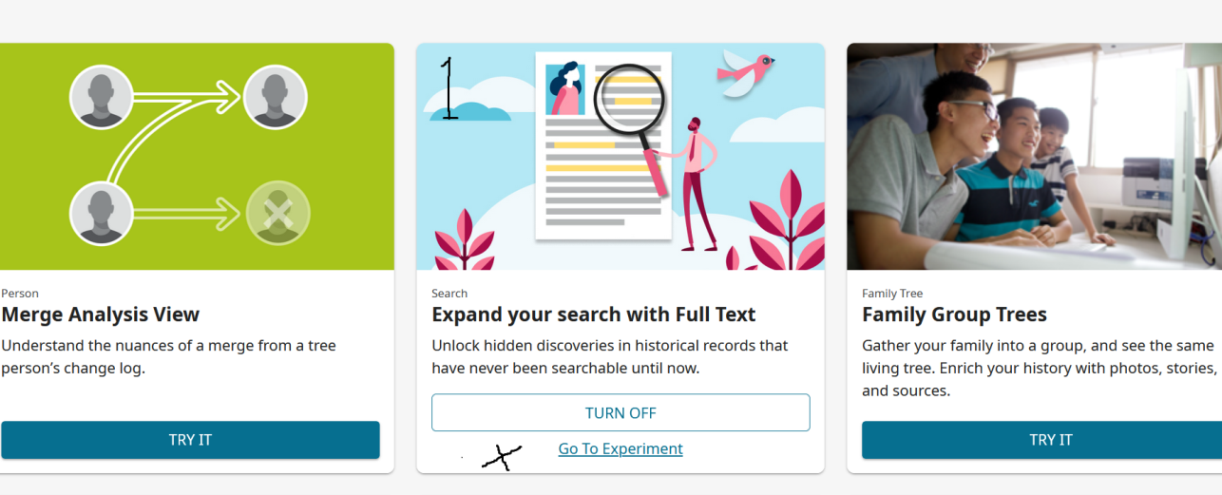
2. It opens to the Search page, which is where you start. Type in
quotation marks, a Name you want to find records on, as the example
where the "2" is in the 2nd image. (it's not case sensitive, doesn't
matter if you use capitals or not). That's all; do NOT put in a
Location, you'll get to that next. Then click "Search".
(Note: Search page has changed, but put your search terms in the
"Keyword" section now)
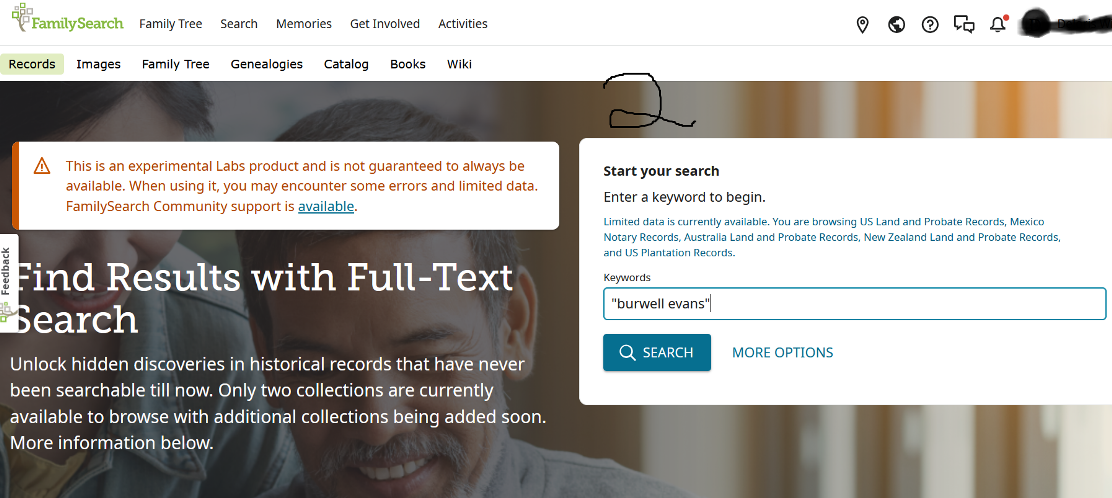
3. Results will come up with a number at the top, which tells you
how many records they found. It's time to filter the results to see
what, if any, they have for the location you want. So, beside FILTER
at the top of the image, I circled "Places". Click that.
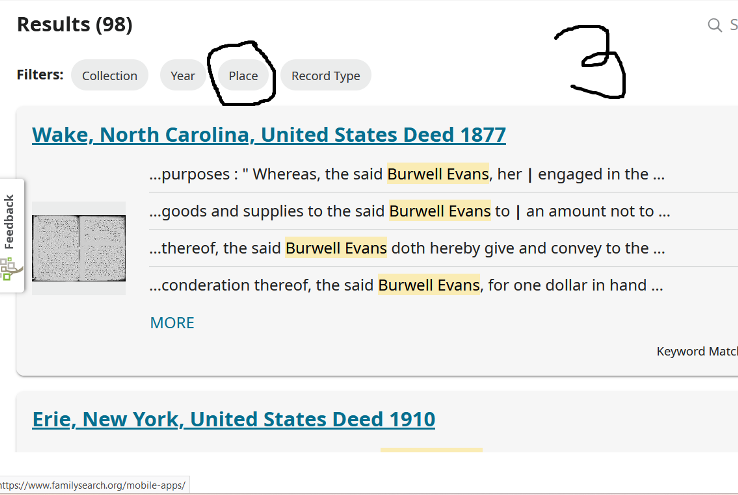
4. It's actually a 2-step process, but you'll get the gist of it
with this single image. Clicking "Places" brings up a very small
menu (Filter by Place) where you select United States of America,
that brings up all of the States with documents for the name; keep
going on and select the State, then select the County.
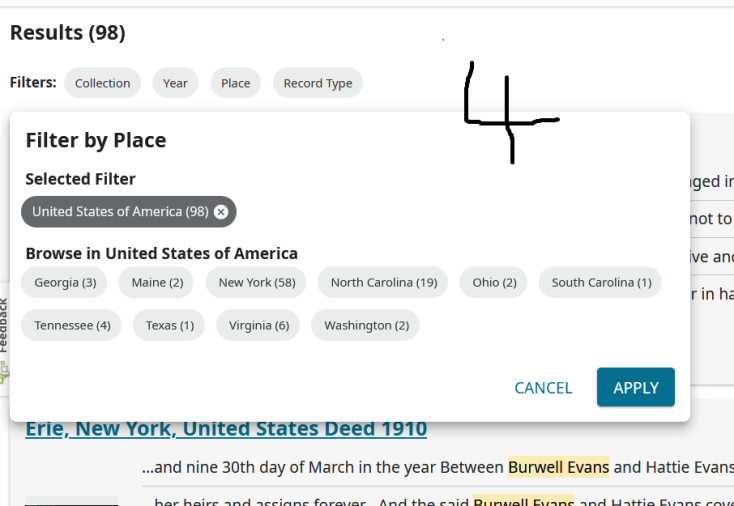
5. After clicking the County, it brings up "Filtered Results", which
look like the Image No. 5, only it's filtered out everything except
the County (or State, if that's what you want) you chose.
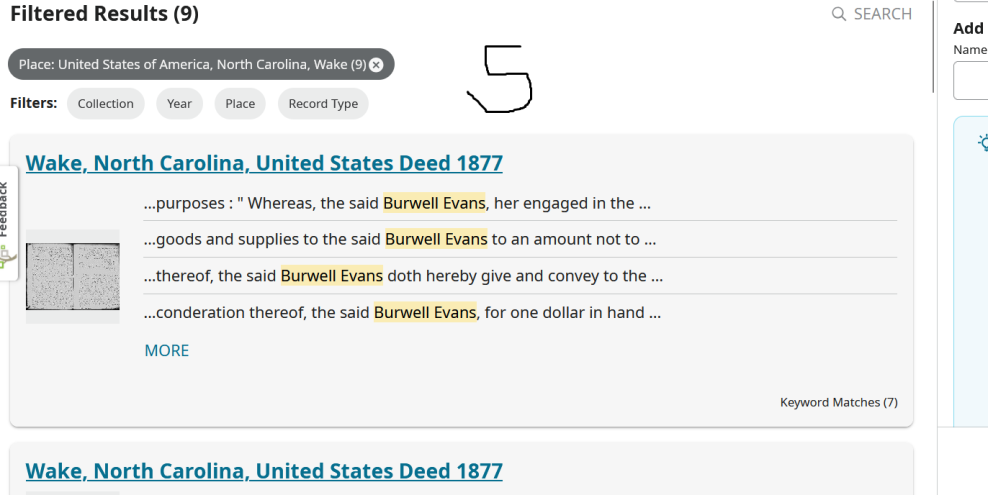
Click onto the title of the document, it will open in a separate
tab. You can view it, look through to see if it's anything you want.
You can download images 1 of 2 ways. To download the image so that
you can name it whatever you want, use the icon on the image in
upper right corner that looks like an arrow pointing down, with a
horizontal line underneath it. Or can download using same kind of
icon on the far right side of the page, under the section which says
"Full Transcript". A selection box for customizing the download will
pop up giving you several options of what to include.
You can check out more counties for the same individual, by clicking
onto "Places" again, which will take you through the process of
selecting another county. You can also do other searches for
additional names, by just putting in their name in the same place
the other one is in the "Keyword" box, and just click search. It
will bring up Results in the same Counties you leave open from the
previous Search. Or, you can click onto "Place" to go to another
County, or even State, using the same method I've given above.
A note - if you're not doing so already, you should be keeping
folders on your computer for the various records you save. I don't
know how particular you are, but I have file folders for every
Surname or Family I'm researching so that I can easily know where to
put things, and how to retrieve them at any time.
Page created by D. Williams
Contact:
NCGenWeb Special
Coordinator
Last updated:
December 11, 2024
  
|







